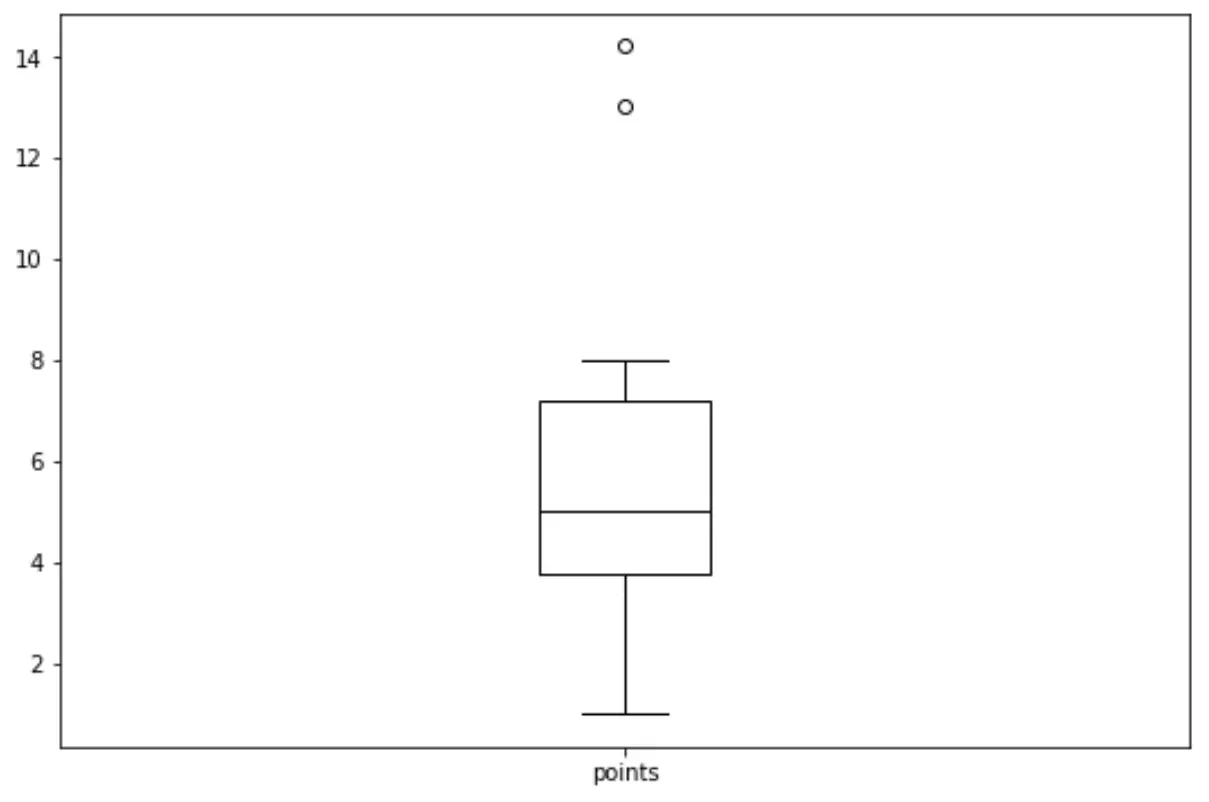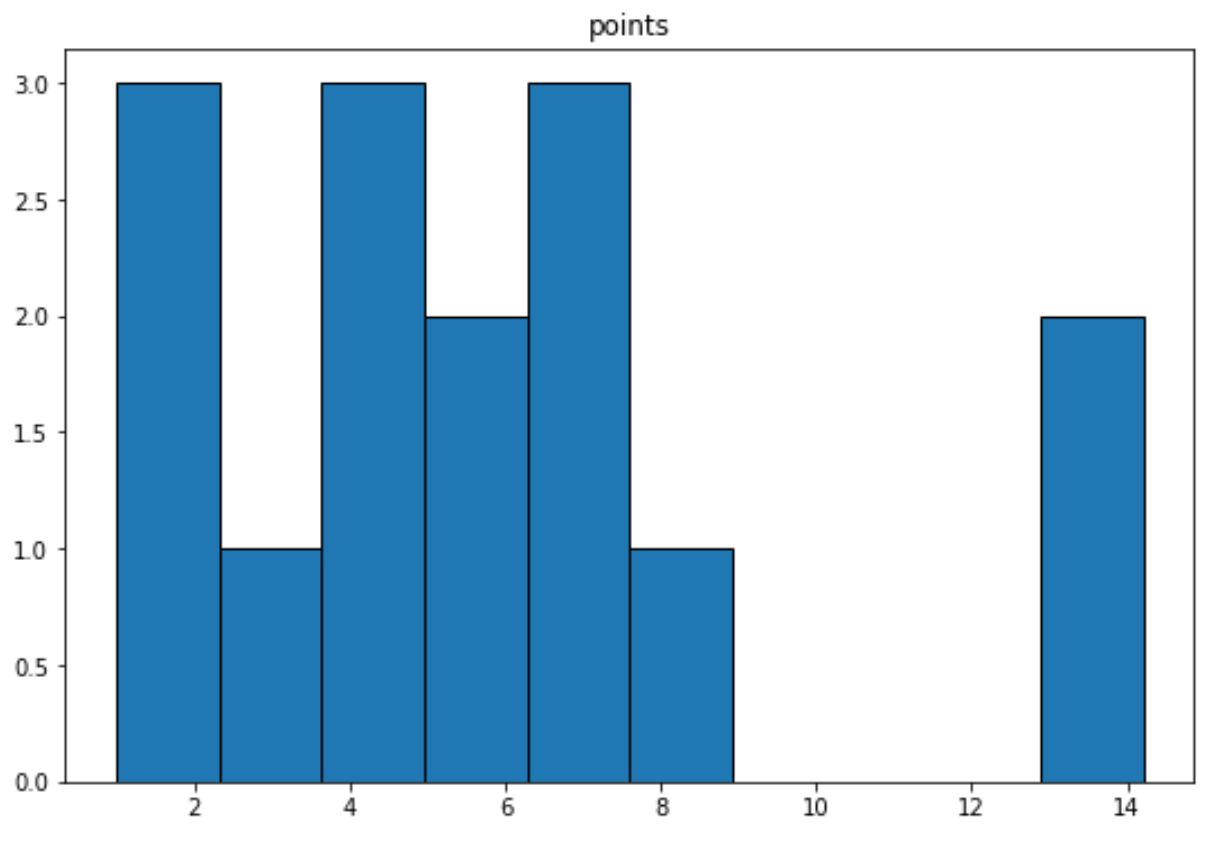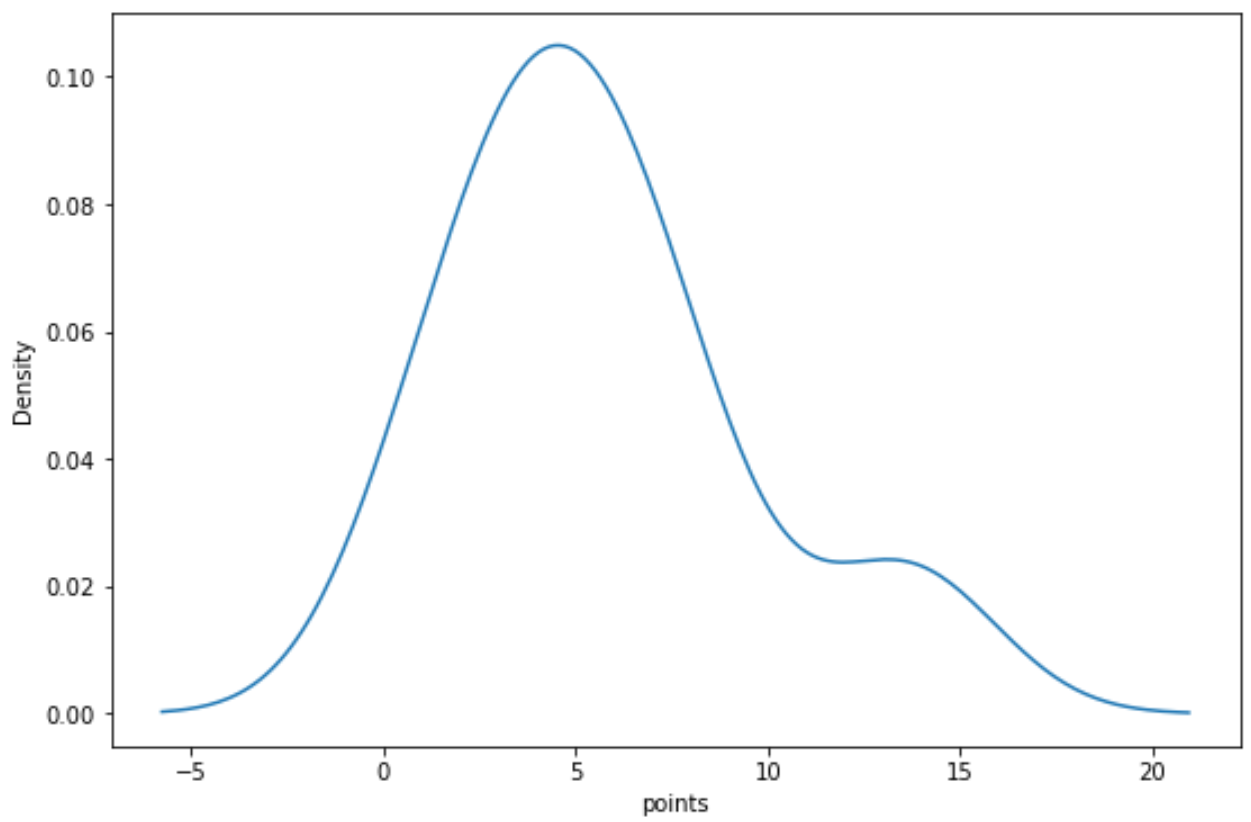Python で一変量分析を実行する方法: 例付き
一変量分析という用語は、1 つの変数の分析を指します。接頭辞「uni」は「1」を意味するので、これを覚えておくとよいでしょう。
変数に対して一変量分析を実行するには、次の 3 つの一般的な方法があります。
1. 要約統計– 値の中心と分布を測定します。
2. 頻度表– 異なる値がどのくらいの頻度で現れるかを説明します。
3. チャート– 値の分布を視覚化するために使用されます。
このチュートリアルでは、次の pandas DataFrame を使用して一変量分析を実行する方法の例を示します。
import pandas as pd #createDataFrame df = pd. DataFrame ({' points ': [1, 1, 2, 3.5, 4, 4, 4, 5, 5, 6.5, 7, 7.4, 8, 13, 14.2], ' assists ': [5, 7, 7, 9, 12, 9, 9, 4, 6, 8, 8, 9, 3, 2, 6], ' rebounds ': [11, 8, 10, 6, 6, 5, 9, 12, 6, 6, 7, 8, 7, 9, 15]}) #view first five rows of DataFrame df. head () points assists rebounds 0 1.0 5 11 1 1.0 7 8 2 2.0 7 10 3 3.5 9 6 4 4.0 12 6
1. 要約統計量を計算する
次の構文を使用して、DataFrame の「points」変数のさまざまな要約統計量を計算できます。
#calculate mean of 'points' df[' points ']. mean () 5.706666666666667 #calculate median of 'points' df[' points ']. median () 5.0 #calculate standard deviation of 'points' df[' points ']. std () 3.858287308169384
2.度数表を作成する
次の構文を使用して、変数「points」の度数表を作成できます。
#create frequency table for 'points' df[' points ']. value_counts () 4.0 3 1.0 2 5.0 2 2.0 1 3.5 1 6.5 1 7.0 1 7.4 1 8.0 1 13.0 1 14.2 1 Name: points, dtype: int64
これは次のことを示しています。
- 値4 が3 回出現します
- 値1が 2 回表示されます
- 値5 が2 回表示されます
- 値2 は1 回出現します
等々。
3. グラフの作成
次の構文を使用して、「points」変数の 箱ひげ図を作成できます。
import matplotlib. pyplot as plt df. boxplot (column=[' points '], grid= False , color=' black ')

関連: Pandas DataFrame から箱ひげ図を作成する方法
次の構文を使用して、「points」変数のヒストグラムを作成できます。
import matplotlib. pyplot as plt df. hist (column=' points ', grid= False , edgecolor=' black ')

関連: Pandas DataFrame からヒストグラムを作成する方法
次の構文を使用して、「points」変数の密度曲線を作成できます。
import seaborn as sns sns. kdeplot (df[' points '])

これらの各グラフは、「ポイント」変数の値の分布を視覚化する独自の方法を提供します。